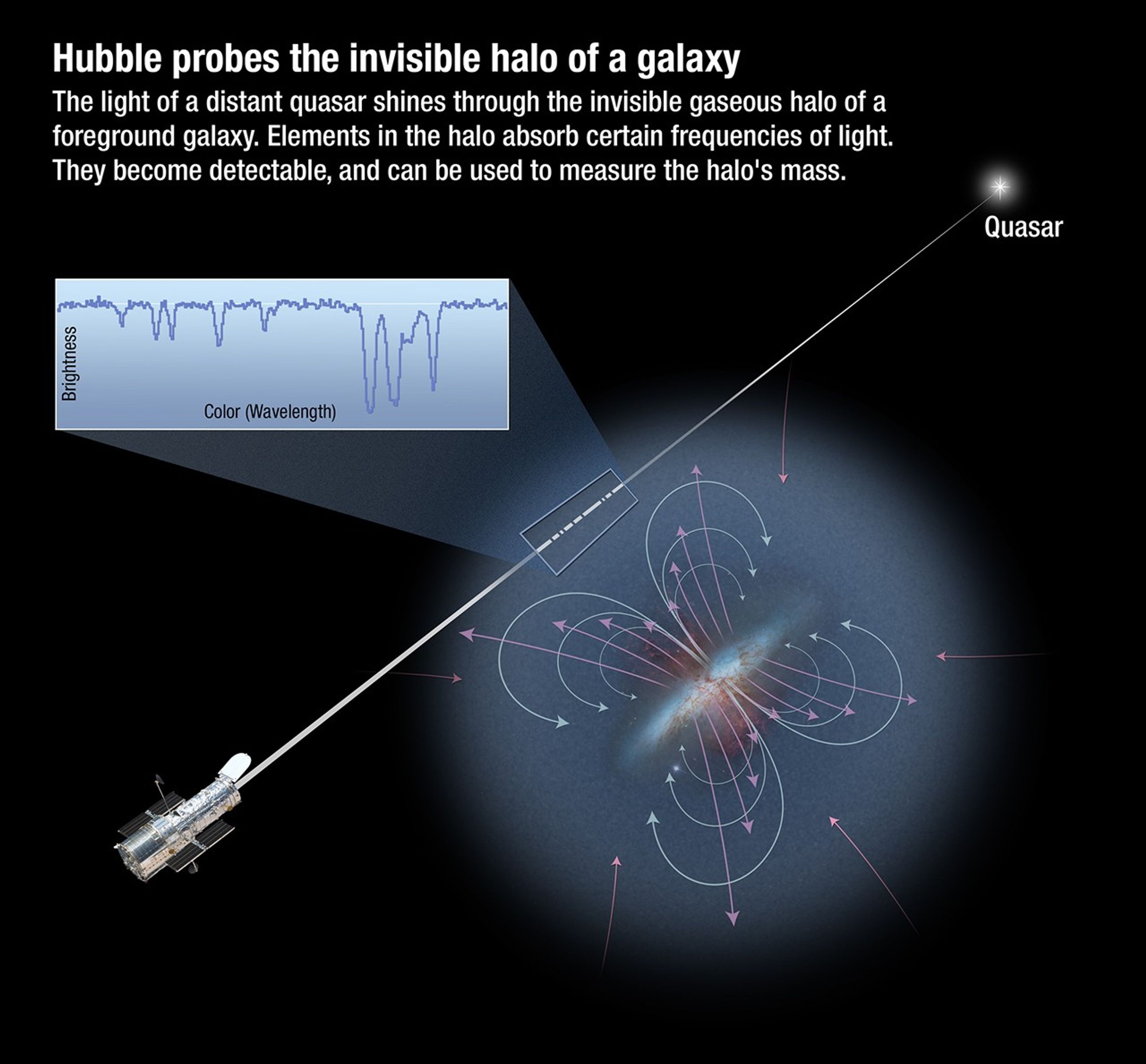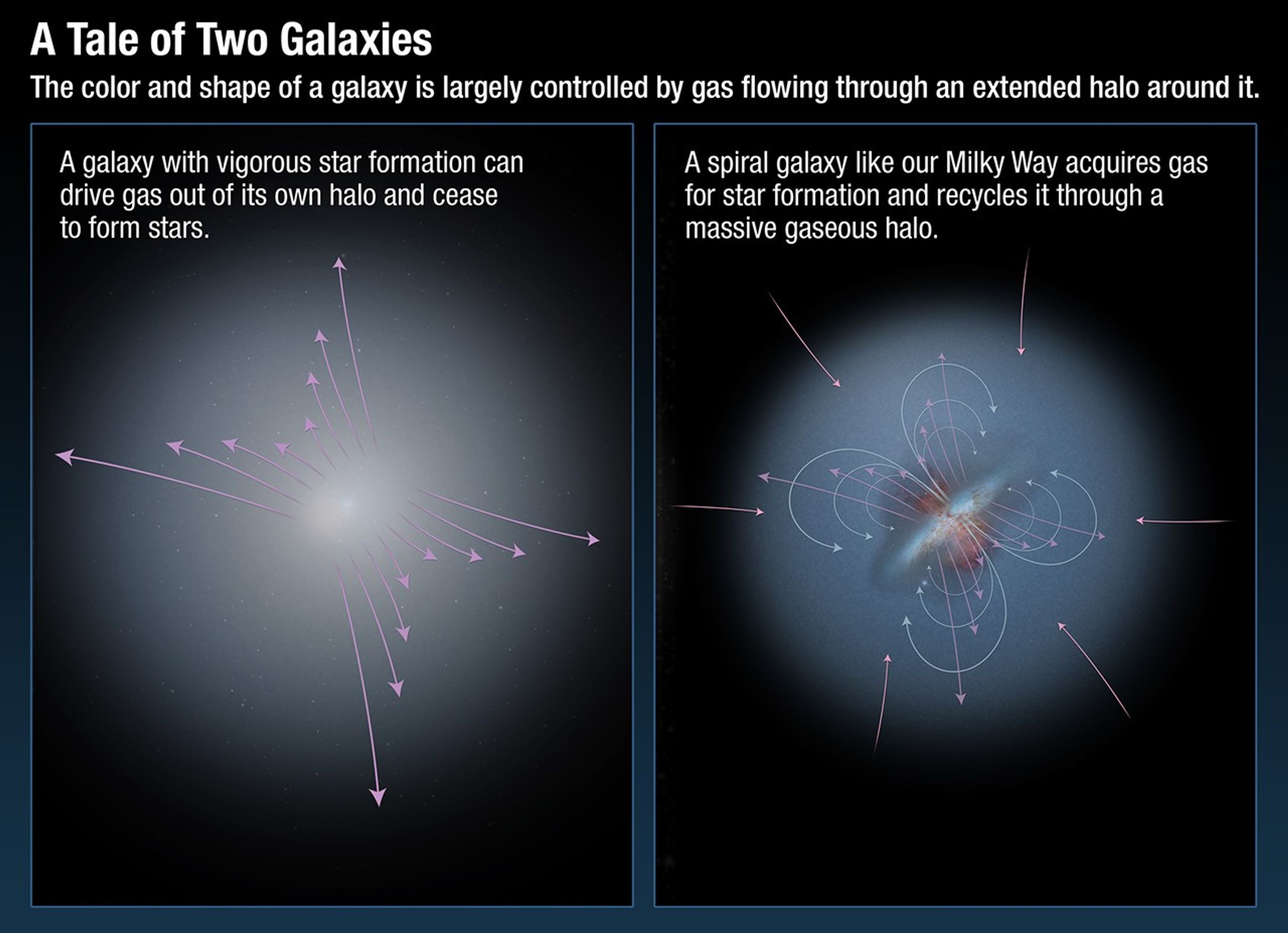1 min read
Hubble Probes the Invisible Halo of a Galaxy

Distant quasars serve as distant lighthouse beacons that shine through the gas-rich "fog" of hot plasma encircling galaxies. At ultraviolet wavelengths, Hubble's Cosmic Origins Spectrograph (COS) is sensitive to absorption from many ionized heavy elements, such as nitrogen, oxygen, and neon. COS's high sensitivity allows many galaxies that happen to lie in front of the much more distant quasars to be studied. The ionized heavy elements serve as proxies for estimating how much mass is in a galaxy's halo.
- Release DateNovember 17, 2011
- Science ReleaseNASA’s Hubble Confirms that Galaxies Are the Ultimate Recyclers
- Credit
Related Images & Videos

A Tale of Two Galaxies
The color and shape of a galaxy is largely controlled by gas flowing through an extended halo around it. All modern simulations of galaxy formation find that they cannot explain the observed properties of galaxies without modeling the complex accretion and "feedback" processes...
Share
Details
Last Updated
Aug 17, 2025
Contact
Media
Claire Andreoli
NASA’s Goddard Space Flight Center
Greenbelt, Maryland
claire.andreoli@nasa.gov




























